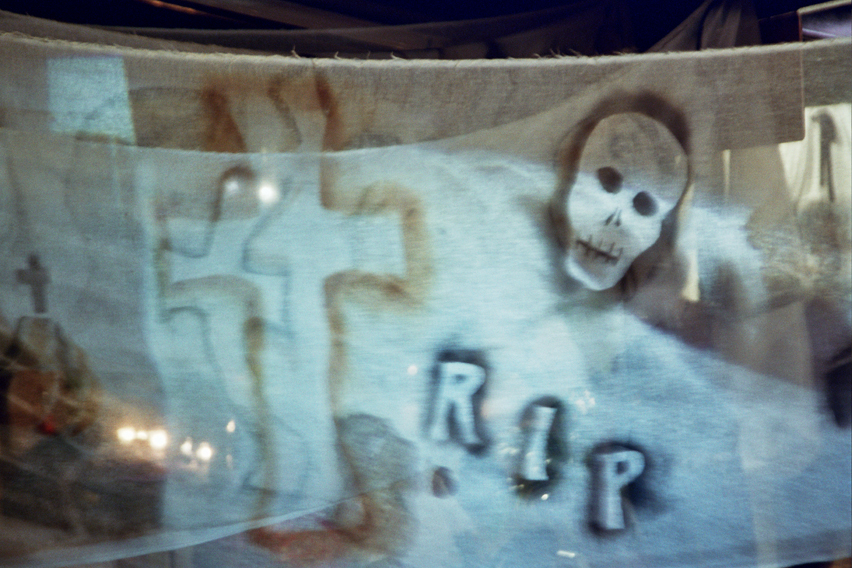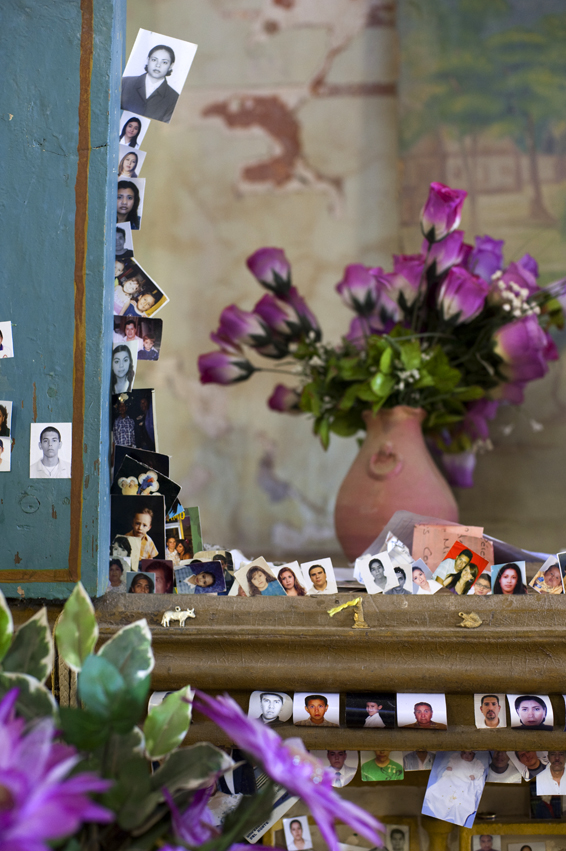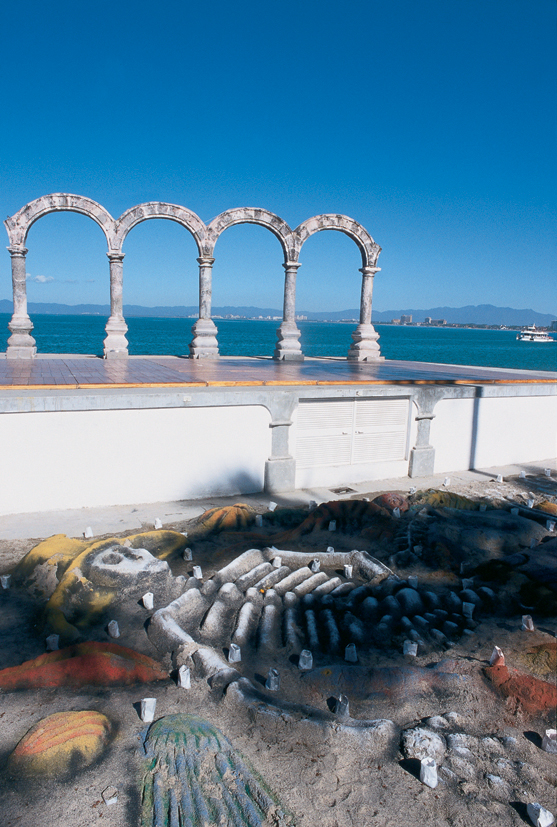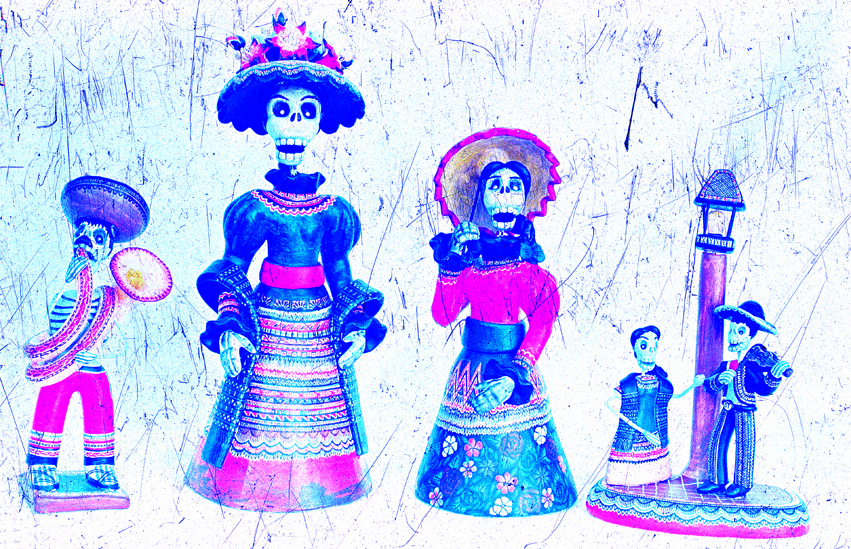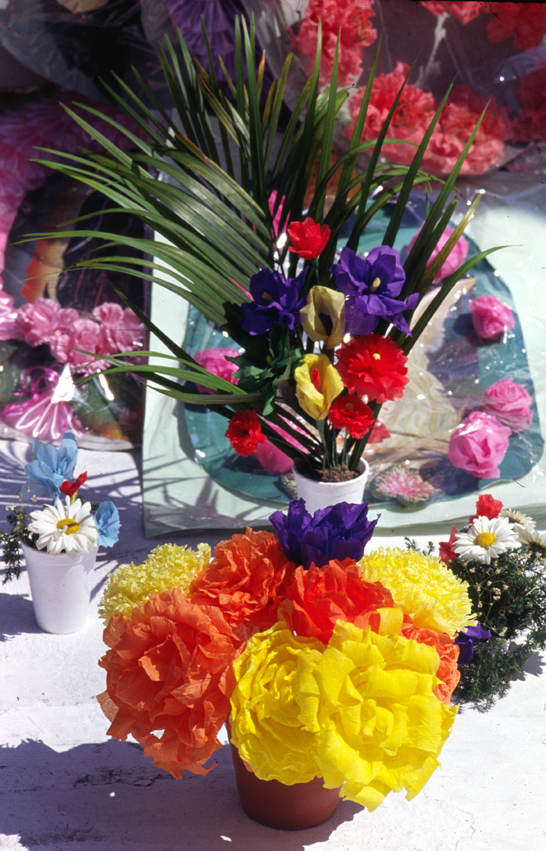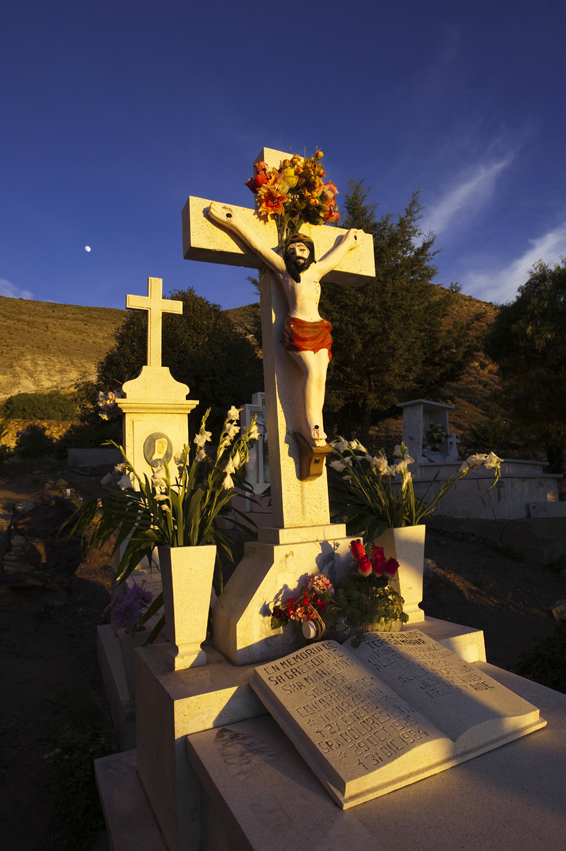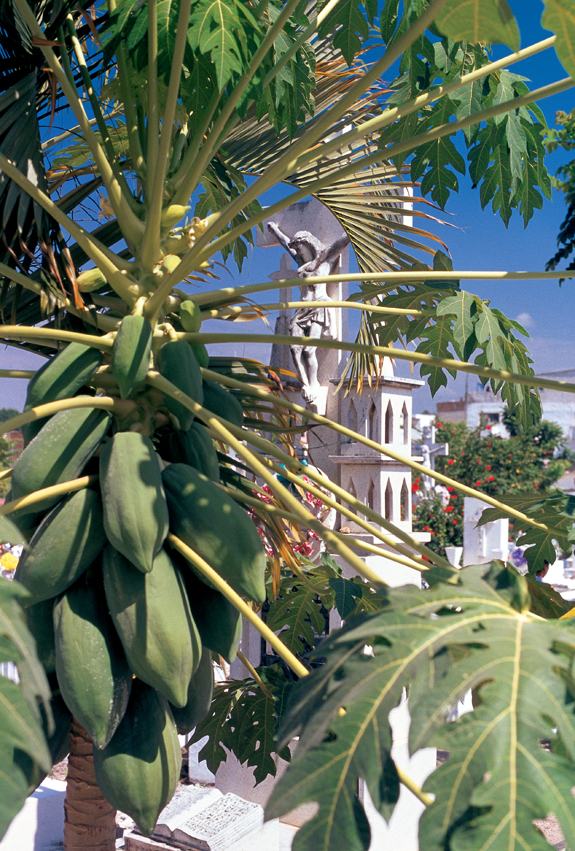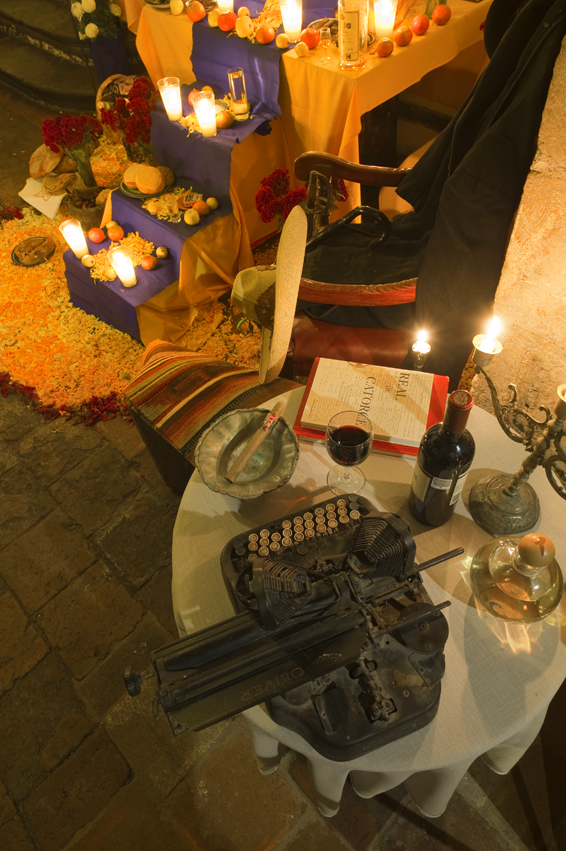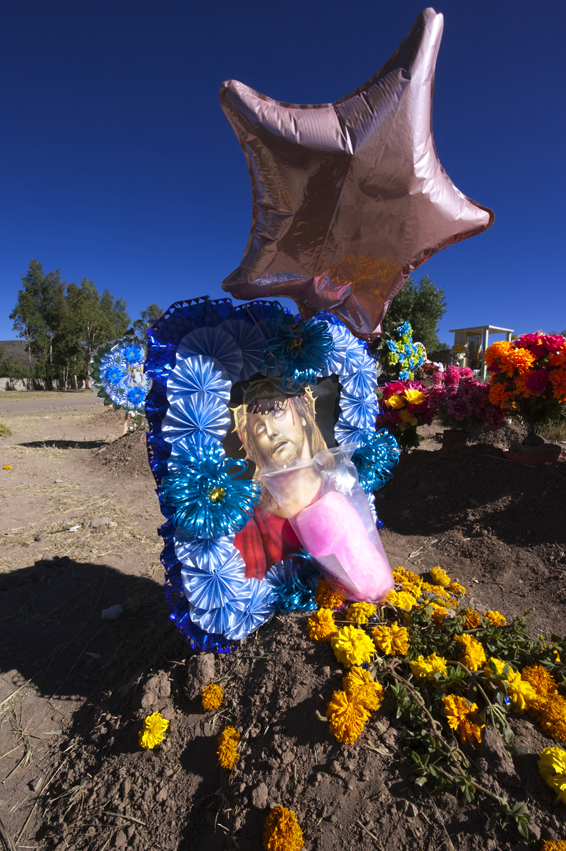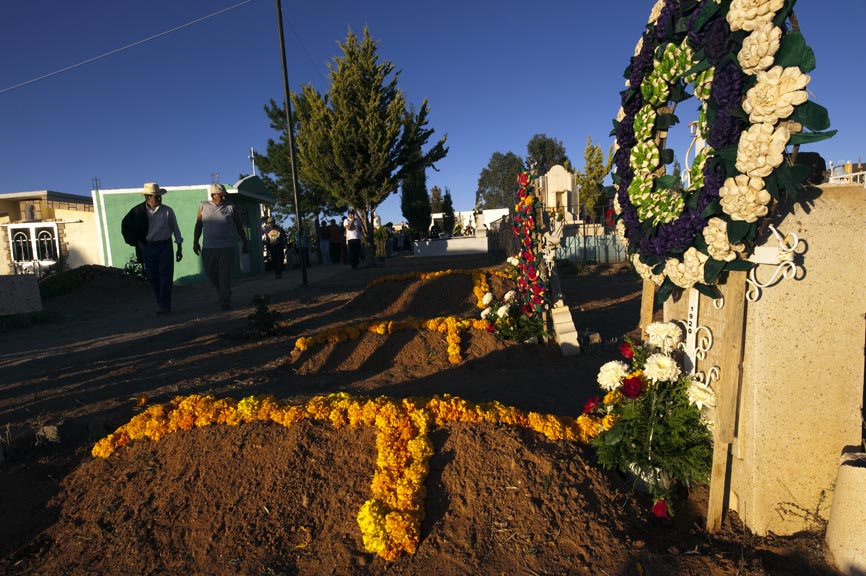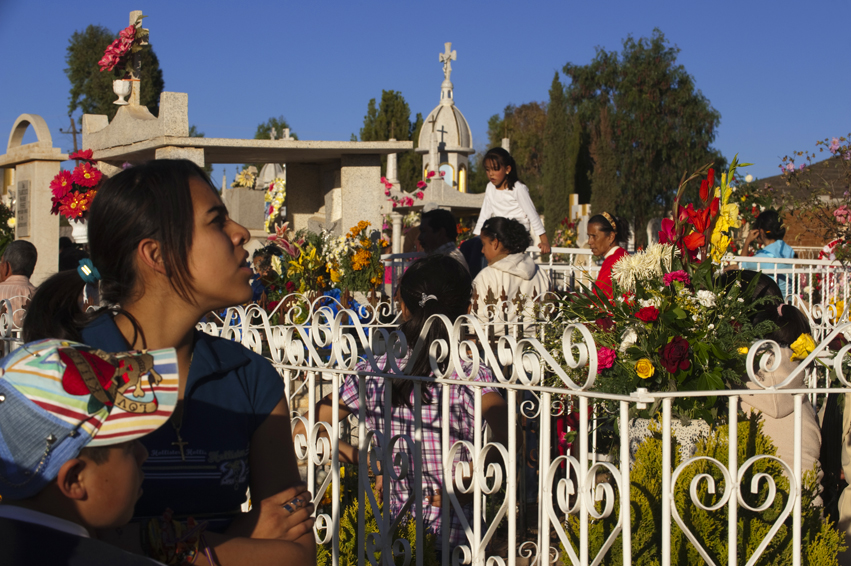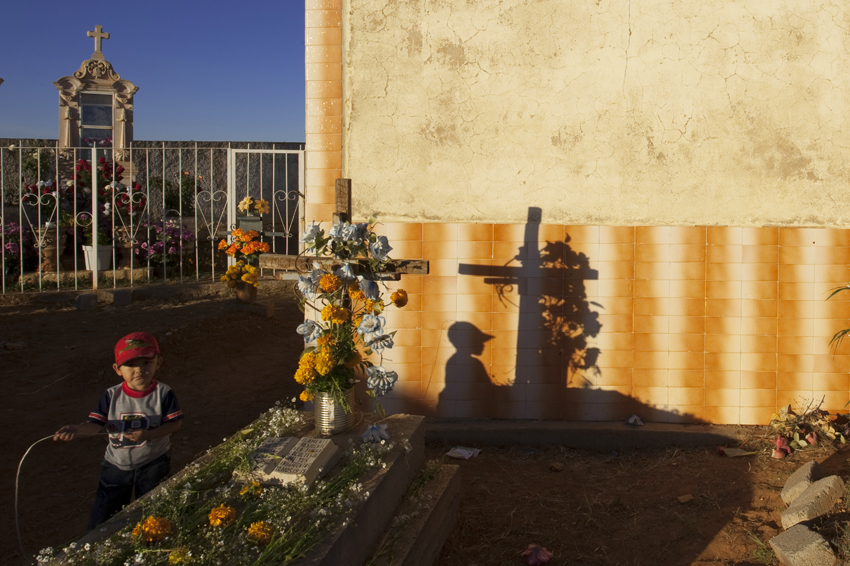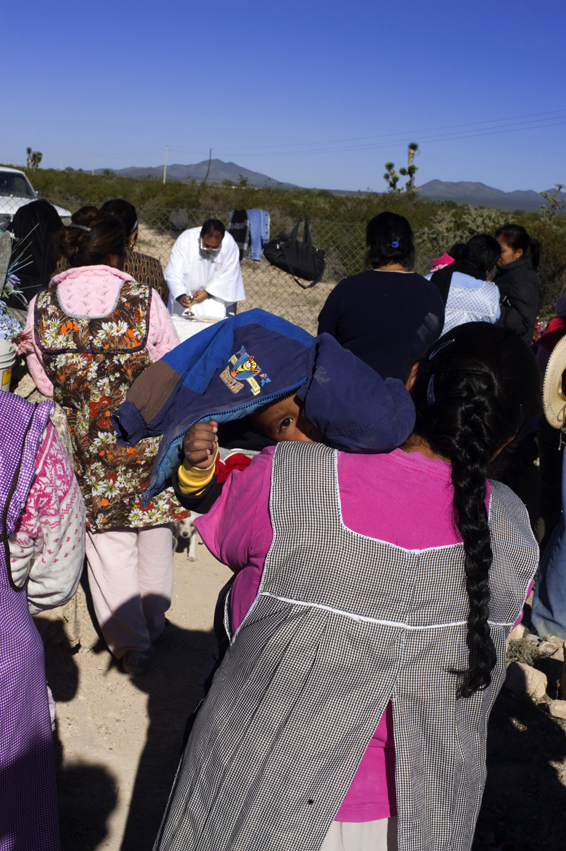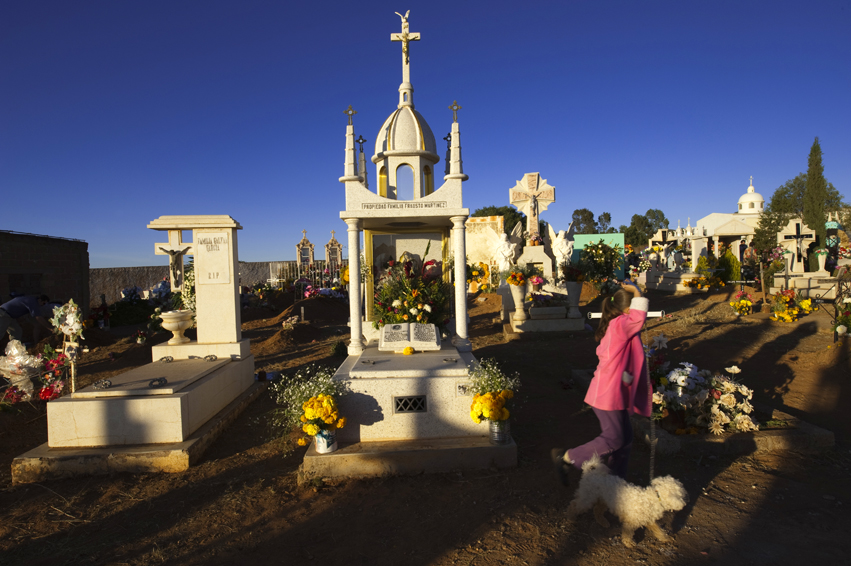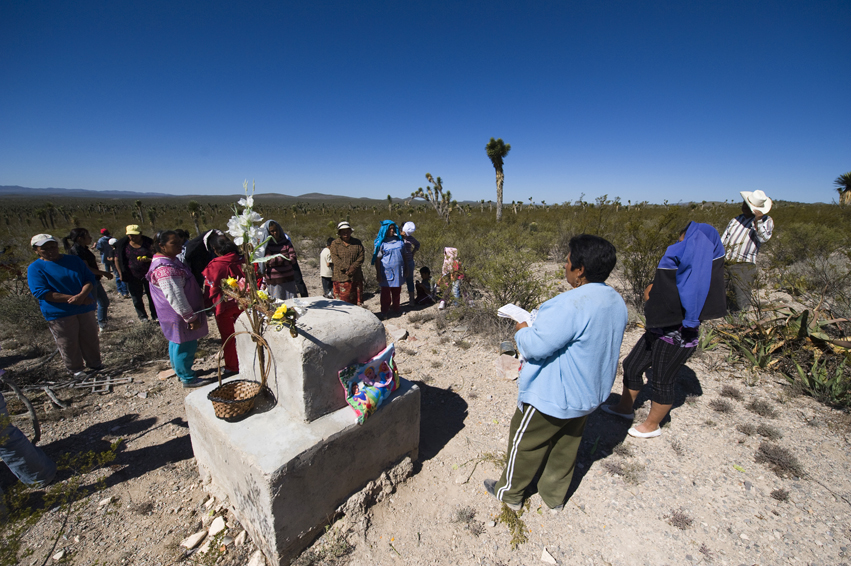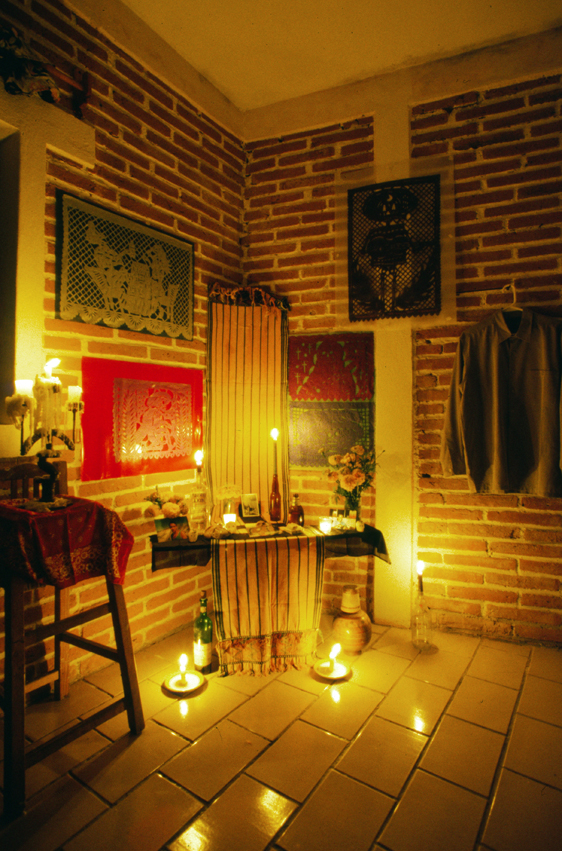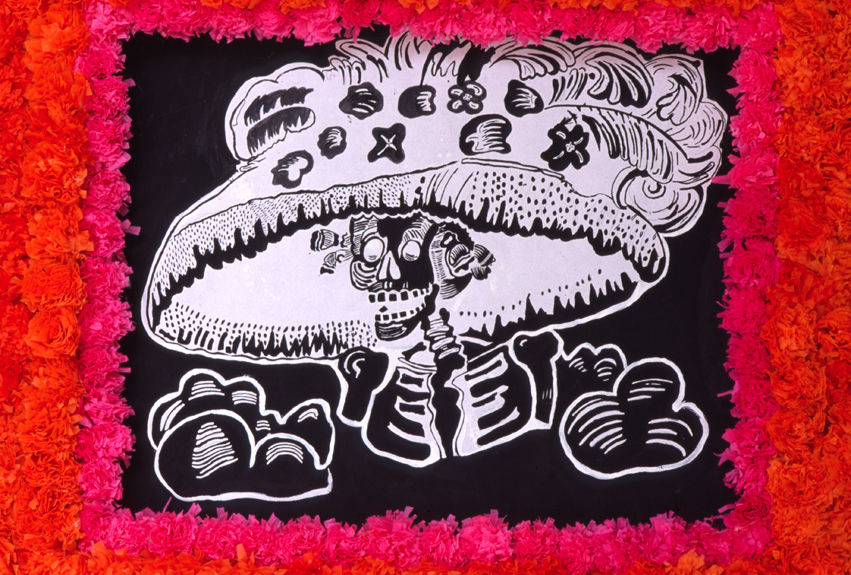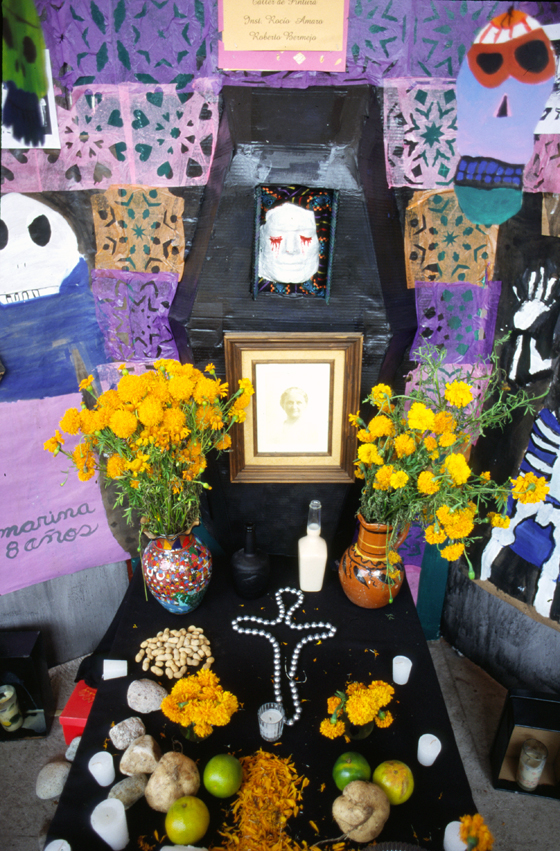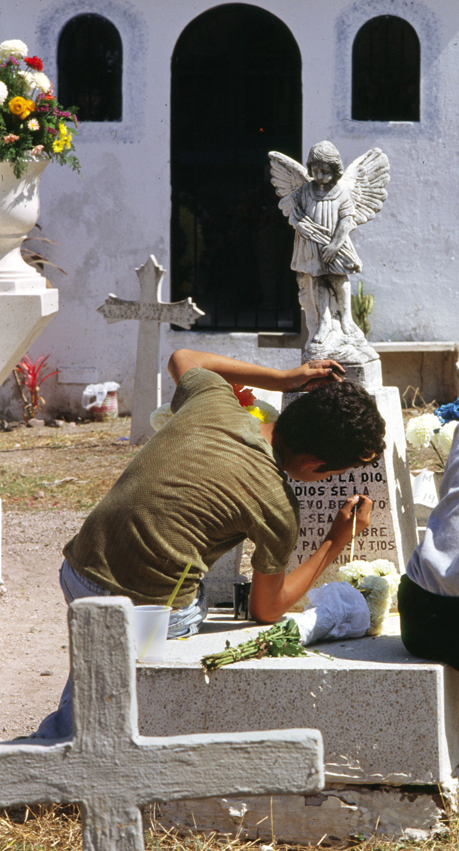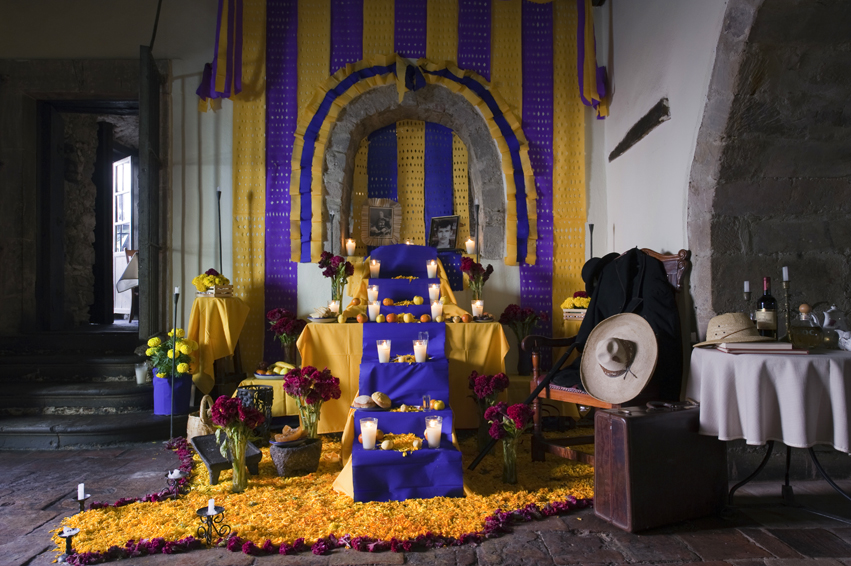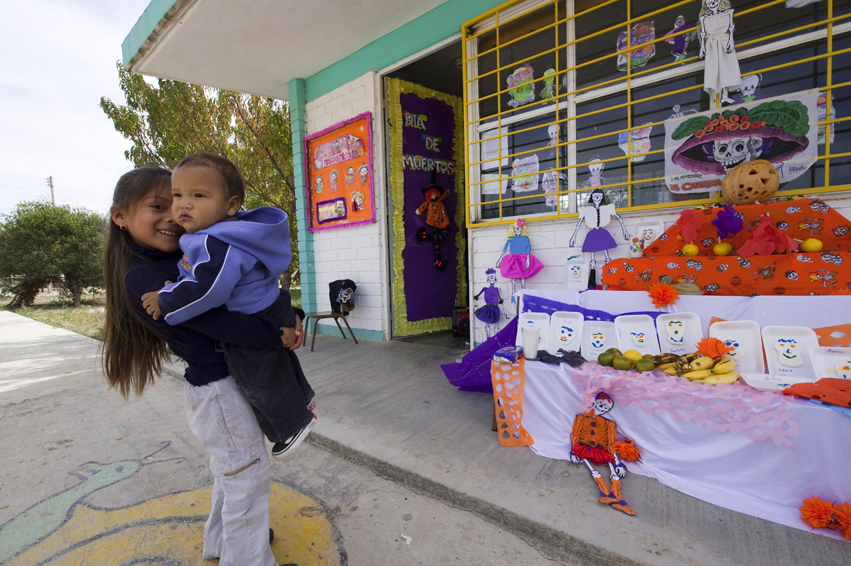The Mexicans are a passionate people; intensely patriotic, traditional and like any latino culture they love performance. Fiesta is a way of Life. As proof, the Mexican calendar is chock full of holidays, feast days, religious and historical celebrations. And amongst all the days commemorating revolutionary heroes, battles, birthdays and holy days, the Day of the Dead, El Dia de Los Muertos, stands out as one of the country’s favourite events.
In the same vein as a good Irish wake, to a Mexican, the remembrance of the dead, if not death itself, is embraced rather than feared. The day departed souls return to earth is cause for joy, not morbidity; a day of colourful celebration not drab despair.
The conquering Spanish in the 16th century were shocked to find the Aztecs devoting a whole month honouring the departed. Outlawing this paganâ practice did little to defuse the tradition but the Spanish cunningly shifted the date to coincide with All Hallows Eve and to the Church’s companion feasts of All Soul’s Day and All Saints Day, where it is now firmly entrenched.
The festivities embodying the present holiday begin at midnight on the 31st October and last for two days. In preparation, cemeteries are spruced up, grave sites manicured and fresh paint applied to headstones. Flowers, especially marigolds, colour the revived scenery.
In the home, special altars ofrendas are prepared to welcome and honour the expected spirit guests. On the altar one places candles, marigolds, water to drink and a selection of foods specific to this occasion. Pan de muertos a sweetbread containing a small skeletal figure calaca as well as sugar skulls and chocolate coffins are laid out as welcome gifts. Candles and marigold flower petals lead a trail to the altar which can be further decorated with cut-out tissue paper scenes, photos and enticing gifts like a favourite drink, cigarettes or other familiar things that were enjoyed during his or her life.
A night of crowded candlelit vigilance in the graveyard is accompanied by feasting, socialising, music and an air of general jubilation as well as prayer and personal reflection. The spirits of the children are anticipated to arrive just before dawn on the November 1st., but only for a few hours. Returning adult souls have a more open invitation through the following night.
The extravagance of the tradition varies throughout Mexico. Some cultural strongholds like Oaxaca celebrate with costumes, masks and street parades. Others like Janitzio near Patzcuaro involve a more reverential observance. The tourist towns may pay only passing heed to El Dia de Los Muertos as a fanciful excuse for children to spend money on the glittering merchandise and sweets. But to the vast majority of Mexicans those first days of November never pass unheeded and no cemeteries remain untended.
As the day of the 2nd. draws to a close candles are blown out, the dead encouraged to return to their resting places. In honouring the dead, the living also reunite as families and friends. The acceptance of death, not as an end, but as part of the cycle of life is an intrinsic example of the duality that persists throughout Mexican culture.
In the course of a few days’ ritual observance, Mexico shows us another way of looking at our mortality. In one beautiful celebration, honour is paid, a tradition maintained and those that have gone before us return to their realm remembered, fat and happy.
